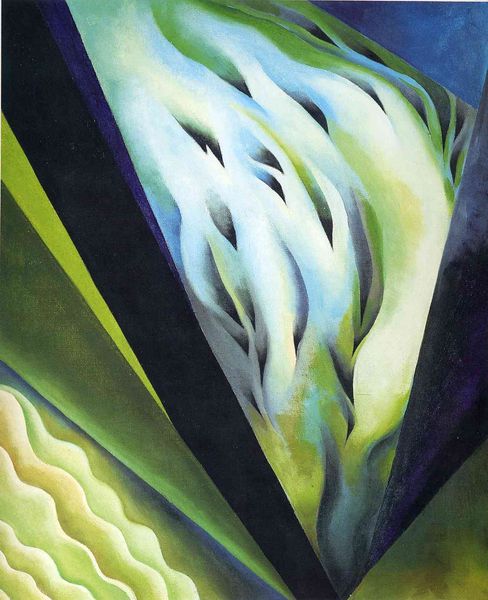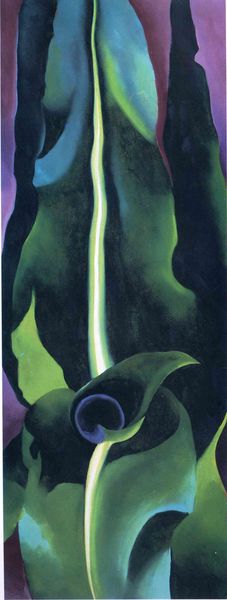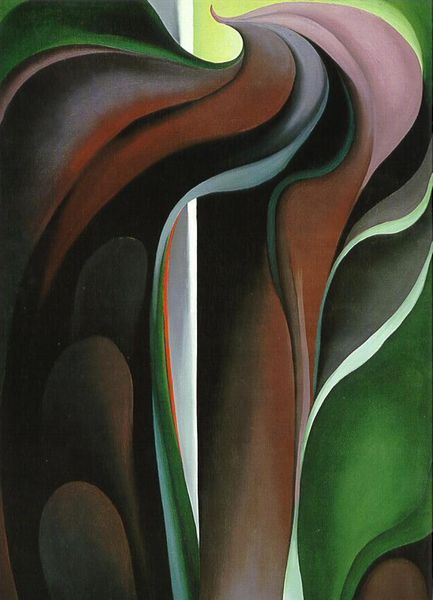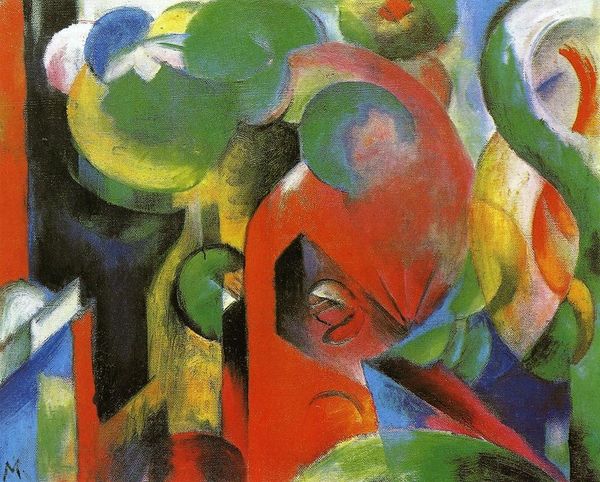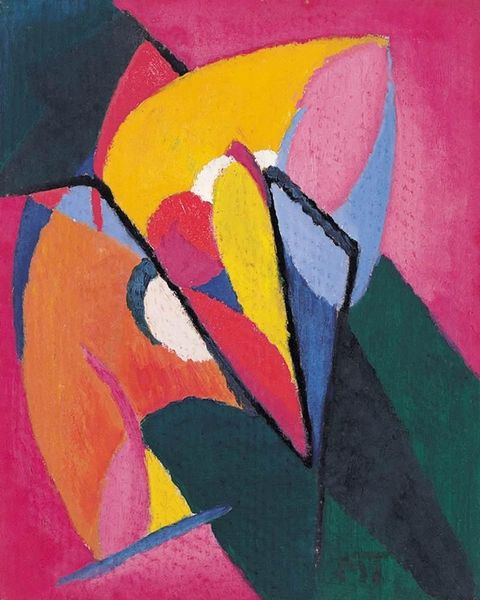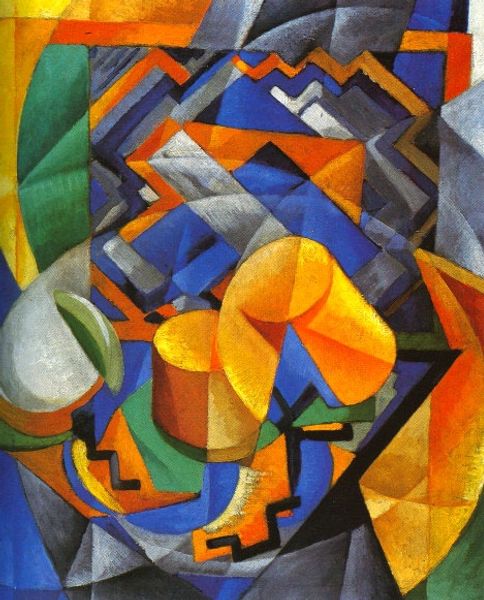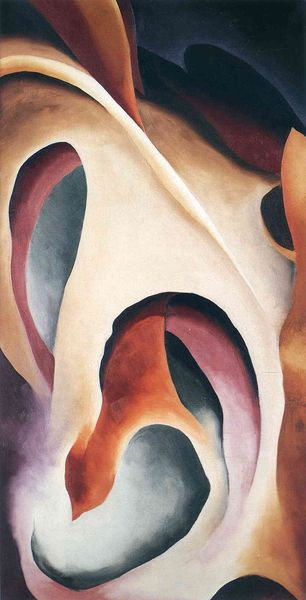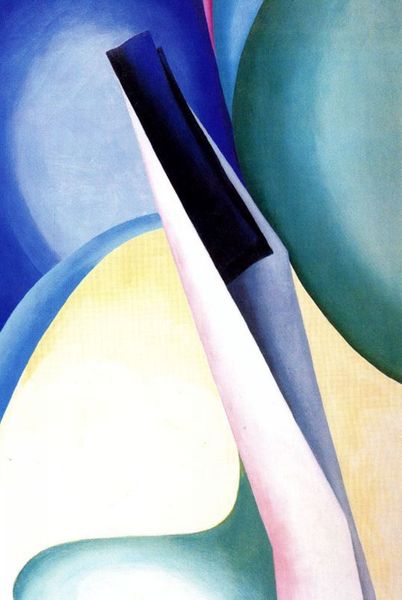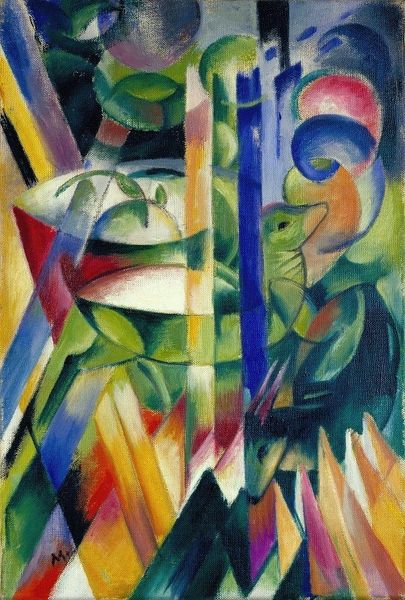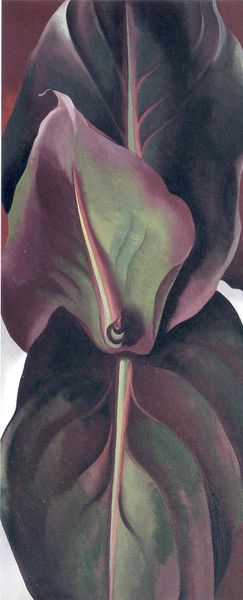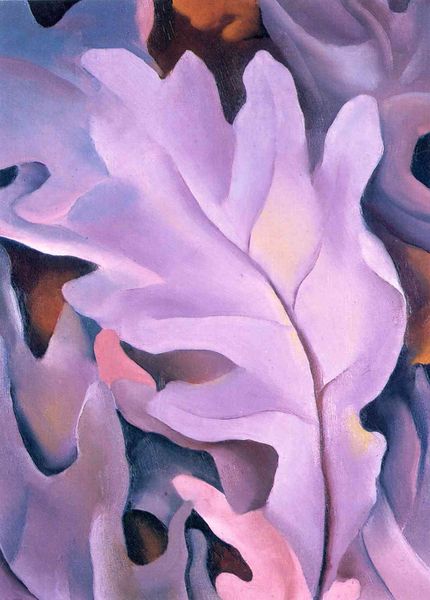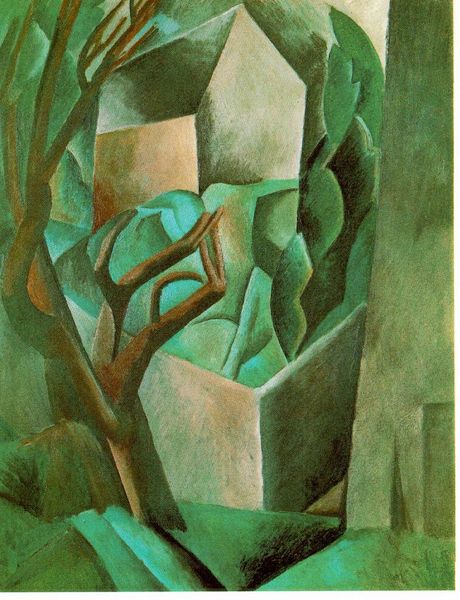
Copyright: Georgia O'Keeffe,Fair Use
Georgia O'Keeffe painted "Corn No. 2" with oil on canvas, using a close-up perspective that transforms a simple vegetable into an abstract form. The image invites us to consider the politics of imagery and the social conditions that shape artistic production in the United States. O’Keefe moved to New York in 1918, and she became part of the circle of artists associated with Alfred Stieglitz’s gallery “291”. Looking at the image one can see that the corn leaves have been cropped, enlarged, and simplified. The sinuous shapes and vibrant colors lend a sensuous, almost erotic, quality to the painting. O'Keeffe was aware of the interpretations of her work, and she resisted attempts to label her art as simply feminine. Her art was part of a wider movement of American modernism, which sought to create a distinctly national identity through the use of abstract forms and vernacular subjects. By examining exhibition catalogues, critical reviews, and biographical accounts, we gain a deeper understanding of O’Keeffe's contribution to American art, while recognizing how the meaning of any artwork is contingent on social and institutional contexts.
Comments
No comments
Be the first to comment and join the conversation on the ultimate creative platform.
